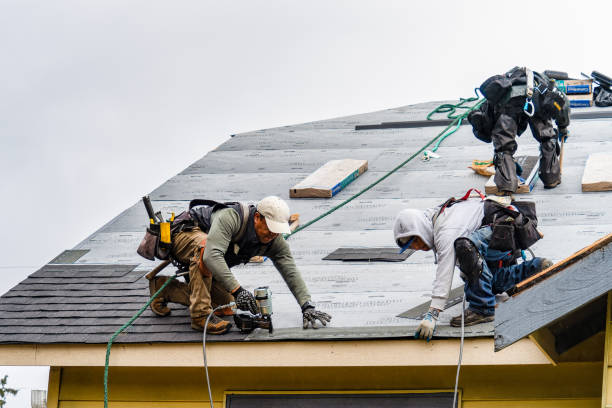Exactly How to Evaluate Different Roof Covering Alternatives for Your Structure Demands
Reviewing roof choices for your structure requires a detailed strategy that thinks about different elements such as the planned use of the framework, local environment problems, and material features. It is vital to consider the benefits and disadvantages of various roof kinds, from asphalt roof shingles to steel and clay floor tiles, while additionally factoring in initial costs and long-lasting upkeep. Additionally, comprehending energy effectiveness and visual charm can affect your decision. As you consider these considerations, one concern remains: which variables will eventually lead your choice for a sustainable and visually pleasing roofing option?
Evaluating Your Building's Demands
To successfully examine roof covering alternatives, start by thoroughly assessing your building's demands. Beginning by taking into consideration the building's meant usage, as various frameworks may require differing roof requirements. As an example, property roofs frequently prioritize looks and insulation, while commercial structures might focus on durability and load-bearing capacity.
Next, assess the local environment problems that will impact roof covering efficiency. Aspects such as temperature changes, rainfall degrees, and wind patterns can affect material option and layout. A roof that succeeds in a pleasant climate might not carry out too in areas vulnerable to heavy snowfall or severe heat.
Furthermore, evaluate the architectural integrity of your building. Make certain that the existing framework can support the selected roofing materials, specifically if taking into consideration much heavier alternatives. It is also important to evaluate any type of regional structure codes or guidelines that may dictate details requirements for roof covering systems.

Comparing Roof Products
As soon as a thorough assessment of your building's needs has actually been completed, the following action entails contrasting various roof materials. Each material provides distinct benefits and disadvantages, making it vital to straighten your option with your specific needs and situations.
Asphalt tiles are commonly identified for their affordability and convenience of setup, making them a prominent choice for household structures. On the other hand, steel roof, understood for its toughness and longevity, can endure harsh weather but may feature a greater first investment.
Clay and concrete ceramic tiles give exceptional thermal insulation and aesthetic charm, especially for Mediterranean-style design, yet they require an even more robust architectural support as a result of their weight. Wood shakes offer a natural appearance and great insulation properties however may demand extra upkeep and are vulnerable to fire hazards.
Evaluating Expense and Spending Plan
Analyzing your roof alternatives necessitates a cautious evaluation of expense and budget factors to consider. The general budget for a roofing job makes up a number of factors, including product costs, labor costs, maintenance, and prospective long-term financial savings. It is crucial to establish a clear budget plan before checking out details roofing materials, as this will assist the decision-making process and assist you prevent overspending.
Begin by obtaining quotes from several professionals to understand labor prices in your region. Make sure that these price quotes include all needed services, such as removal of the old roof, installation, and any type of added features, like insulation or air flow enhancements - Perrysburg Roofer. Next off, evaluate the expense of different roof materials, taking into account both preliminary installment expenses and anticipated life expectancy

Understanding Energy Effectiveness
Energy efficiency plays a vital duty in the selection of roofing products and systems, significantly impacting both energy consumption and general comfort within a building. An appropriate roofing can improve thermal performance, minimizing the demand for home heating and cooling systems, which in turn decreases power bills and minimizes ecological effect.
When evaluating roof choices, consider materials that reflect rather than soak up warmth. Additionally, proper insulation and ventilation are vital to optimize the power effectiveness of the entire roof covering system.
Another vital element is the roof's longevity and upkeep needs. Resilient materials that require much less constant replacement contribute to lasting visite site power savings. Furthermore, the power effectiveness of a roof system can likewise be examined via its conformity with established sustainability rankings such as power CELEBRITY or LEED.
Considering Visual Appeal
A roof covering's visual appeal substantially affects the overall appearance of a structure, matching its architectural style and enhancing visual allure. Sylvania Roofing Contractor. When examining roof covering alternatives, it is necessary to think about exactly how the selected product, shade, and design will certainly balance with the existing structure and area. A properly designed roofing system can elevate even the simplest of buildings, transforming them into aesthetic focal points
Different roof covering products provide numerous aesthetic top qualities. For instance, typical roof shingles might evoke a timeless charm, while steel roof can give a modern-day, smooth appearance. Furthermore, the shade of the roofing material plays an important role; lighter shades can make a structure appear even more roomy, while darker tones may develop a cozier find this atmosphere.
Moreover, building elements, such as dormers and eaves, can improve the roofing's aesthetic impact. It is a good idea to speak with specialist designers or engineers to make sure the chosen roofing alternative straightens with the total layout intent. Ultimately, a roof covering should not only offer practical benefits but also add positively to the building's visual, reflecting the owner's taste and the character of the surrounding setting.
Final thought
